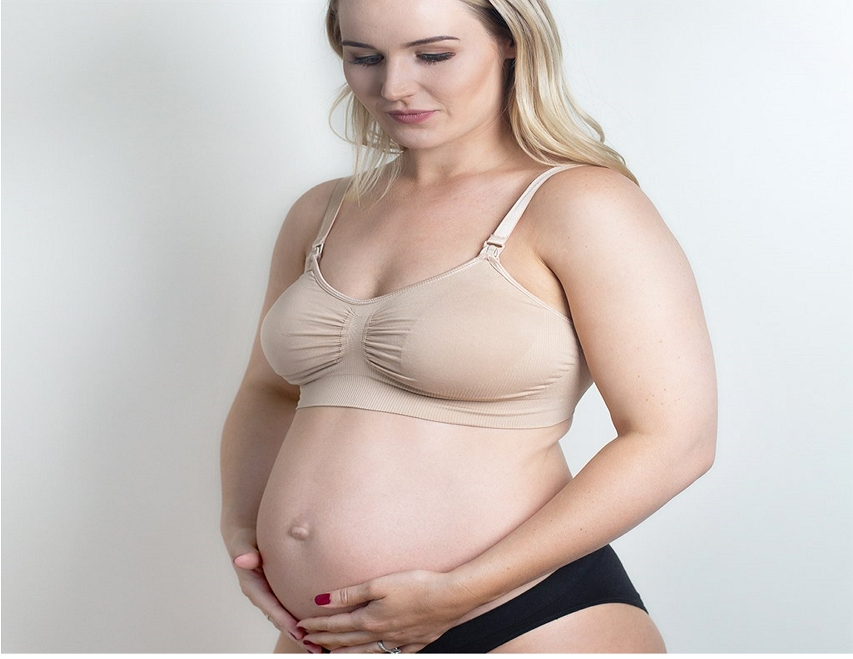When to buy maternity bras? This is a common question by new mom’s. However, we have prepared this article to help you with a detailed guide on when to buy your maternity bra.
Maternity bras are not the cheapest, so you want to make sure that you get your money’s worth. You don’t have to buy them as soon as they come out of the package – it might be a good idea to wait until after the first wash before trying them on for fit and comfort. However, if you can go into a store and try one on then do so!

If there is no time or place available where you can try this then shop online with reputable stores like Amazon Maternity Bras. They offer great deals but also plenty of reviews by previous customers who will tell what size fits best and which brands produce comfortable maternity bras.
What is the recommended maternity leave?
Maternity leave is a period that new moms can spend with their newborns before returning to work. Paid maternity leave is now mandatory in countries such as Australia, Canada, and the United States.
Most European nations used paid parental leave schemes where both parents can take up to one or two years off from work after having children without losing money.
“Paid” doesn’t necessarily mean you’ll be receiving full salary – some companies offer employees partially compensated pay during this time; it varies on each company’s policy. It also does not guarantee your job will be waiting for you upon return (if they even allow pregnancy leaves).
For example: If an employer has more than 50 workers then they must provide unpaid family medical leave for up to 12 weeks per year.
What is the difference between maternity leave and FMLA?
Maternity leave is a standard benefit offered by employers to provide time off from work for expecting mothers. FMLA provides specific rights, but no guarantees that an employee will have job protection or earned benefits while on leave.
Employees should know the difference between maternity and FMLA so they can get paid correctly if needed during their pregnancy leaves.
What is the difference between SMP and maternity allowance?
It is the same thing. It’s only called maternity allowance when you are on it instead of SMP. They are both paid at a rate similar to your usual pay for up to 39 weeks, but they are not the same thing.
You get this benefit if you have worked enough hours in your job or jobs over certain periods before becoming pregnant or having a baby and these must be time spent working after April 2015 (before then, this was measured differently).
How long is additional maternity leave?
The additional maternity leave is calculated by adding the number of days left in your regular paid benefit and then multiplying it by two. However, this cannot exceed twelve weeks per year.
What is classed as ordinary maternity leave?
Ordinary maternity leave is the standard amount of time that women are legally entitled to for their period of pregnancy. This does not include any additional weeks, whether paid or unpaid, which may be negotiated between employer and employee. Maternity Leave (ordinary) will end on a date no later than 52 weeks after it started.
Ordinary Maternity Pay must also end on this same date if you’re receiving it, but your Employer can ask HMRC for permission to pay SMP up until five days before your baby is due – check with them first!
You don’t have an automatic right to Statutory Adoption Pay, however, there are rules about how much notice you need to give to qualify for SAP.
Do I have to pay back my SMP if I don’t return to work?
If you stop working, your SMP isn’t taxable. You’ll need to pay back any income-related elements of the payment with interest until they’re repaid in full.
This will be at a rate set by HMRC every tax year and is currently being charged at 0% from April 2016. It’s a percentage based on what you’d have paid if your earnings were over £45 per week instead of below it or not working.
The rules state that this repayment must only take place when annual earnings go above £20,000 for one month – so as long as you don’t earn more than this during each three month assessment period (which begins four months after a claim), there should be no repay made to HM Revenue & Customs.
What benefits am I entitled to if I don’t return to work after maternity leave?
If you don’t return to work after maternity leave, your employer is obligated to continue paying for benefits that would have been covered by the company. An example of this type of benefit is life insurance coverage and also health care premiums.
You may still be entitled to certain job-related benefits such as a pension plan or group term life insurance policy if it was offered before going on maternity leave provided there’s no break in service from when you went on unpaid maternity leave back into employment with the same employer.
What is a standard maternity leave policy?
A standard policy is one that the majority of employees are offered within an organization.
